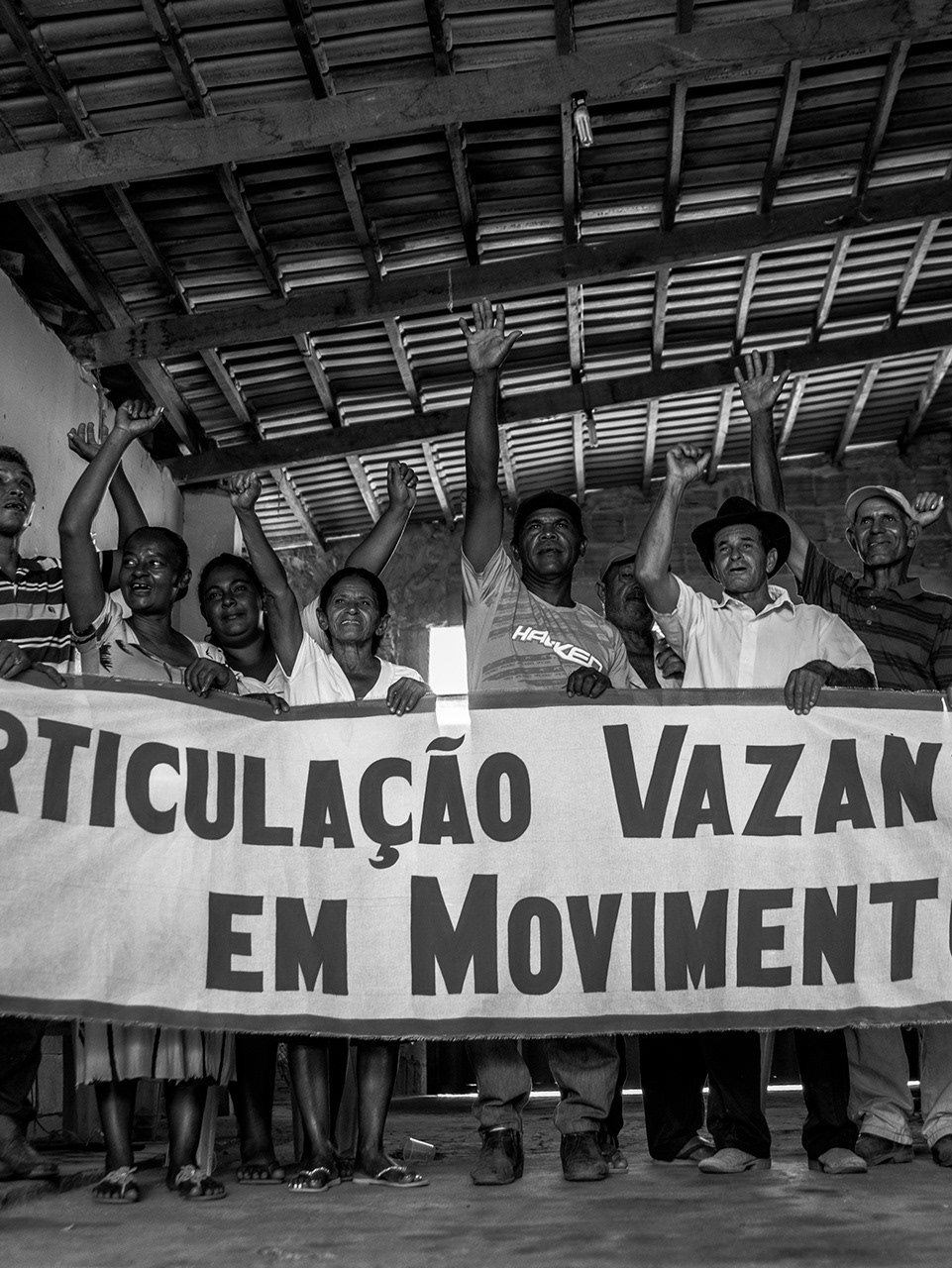Movimento Geraizeiro movement banner during Articulação Rosalino Gomes' Leaders Meeting.
Montes Claros - MG, 2015
by Sara Gehren
Montes Claros - MG, 2015
by Sara Gehren
Geraizeiros
The geraizeiros have a fluid and constantly moving identity. It's formed from the resistance to the increasing deforestation associated with monocultures and mining projects in rural Brazil. The geraizeiros assert themselves by their protection and relationship with the ancestral territory of the Gerais, mainly composed by the Cerrado, the second largest biome in Latin America. And it's the Cerrado biome that provides their sustenance, their food and their water. Their cultural and religious practices are intrinsically connected to the Cerrado as well as their everyday life.
One of the geraizeiros’ main goals, when it comes to their political struggle, is the preservation of water springs: the Cerrado is known as “Brazil’s water tank” due to its concentration of important springs and valuable hydrographic network, which holds Latin America’s three largest hydrographic basins. Despite the great foes the geraizeiros face in their struggle, such as eucalyptus monocultures farmers and powerful mining enterprises, they refuse to back down. Organized through the Movimento Geraizeiro movement, they already sum up several achievements.
Água Boa II
Rio Pardo de Minas - MG
Rio Pardo de Minas - MG
Deca sits next to a preserved spring, an achievement of his community's struggle and way of living.
Água Boa II, Rio Pardo de Minas - MG, 2018
by Sara Gehren
Água Boa II, Rio Pardo de Minas - MG, 2018
by Sara Gehren
The Água Boa II community is one of the geraizeiro villages near the city of Rio Pardo de Minas, and is a part of the Sustainable Development Reserve Nascentes Geraizeiras. The reserve was created in a way that not only acknowledges the traditional populations’ contribution to the protection of the environment but also allows them to pursue their way of living according to their culture. The creation of the reserve by presidential decree in 2014 was an achievement of an eleven years struggle, fought hard by the traditional communities in the area. Between conversations with public institutions and NGOs and autonomous direct actions, the villagers from Água Boa II faced powerful foes amongst the region’s economic and political elite, from politicians to eucalyptus farmers. In the area known as Areião Plateau, now protected by the reserve, one can still see the marks left by invaders. The land there is red and filled with severed tree trunks. When looking at the horizon, a large eucalyptus crop is seen, a reminder of what’s been planned for the region.
Sobrado
Rio Pardo de Minas - MG
Rio Pardo de Minas - MG
Mr. Sabiá, community leader, guide us to the Caiçara River spring. On our way there, we could see the plumbing built by the community to ease their water supply.
Sobrado, Rio Pardo de Minas - MG, 2018
by Sara Gehren
Sobrado, Rio Pardo de Minas - MG, 2018
by Sara Gehren
José guided us through a nine hours long outing to the spring of the Nogueira River.
"The most beautiful thing around here are the flowing river waters".
Sobrado, Rio Pardo de Minas - MG, 2018
by Sara Gehren
"The most beautiful thing around here are the flowing river waters".
Sobrado, Rio Pardo de Minas - MG, 2018
by Sara Gehren
Sobrado is a community located in the outskirts of Rio Pardo de Minas. By the beginning of the 2000s, a group of entrepreneurs invaded their land to begin the production of charcoal and pasture for cattle. As the ongoing deforestation threatened to dry up the springs that provide water for the families of Sobrado, the community started to organize themselves to protect their land and their way of life. Despite the attempts to convince the invaders and the appeals to official institutions going wrong, Sobrado left the dispute victorious and started the process of reforestation. After the resolution of this conflict, the Sobrado community started a negotiation with the city government which led to the approval of the Law 1.629, that acknowledges the identities and land rights of Sobrado and other traditional communities in the Rio Pardo de Minas area. That was the first city law about traditional populations rights in Brazil.

